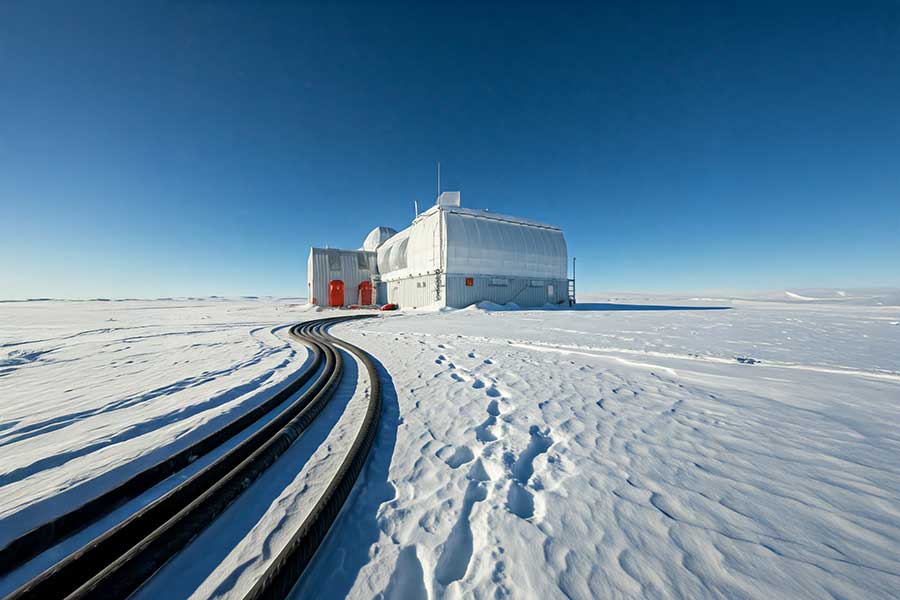
Cables used in very cold environments, such as polar regions, high altitudes, cold storage, frozen food processing plants, and some industrial applications, must maintain their performance at low temperatures, unlike standard cables. Standard PVC insulated cables harden, crack, and become brittle at low temperatures, leading to transmission problems and safety risks. For this reason, "cold climate cables" or "low temperature cables" are used, which are specially designed for such harsh conditions. As Ülkü Kablo, we are with you with our high-strength productions that will be suitable for your use at low temperatures. In this text, we will take a closer look at what these cables are, their types, characteristics, the materials used and what to consider when choosing them.
The Importance of Cold Climate Cables
At low temperatures, the insulating materials of standard cables lose their elasticity and become vulnerable to mechanical stress. This can lead to cracking and breakage of cables, damage to internal conductors, and as a result, electrical faults, short circuits, and even fires. Cold climate cables, on the other hand, maintain their flexibility and continue to work reliably even at low temperatures thanks to specially formulated insulation and sheath materials.
Types of Cold Climate Cables
Cold climate cables are generally classified according to the insulation and sheath materials used:
- Silicone Cables: Silicone rubber insulated and sheathed cables can maintain their flexibility up to -60°C and even lower temperatures. They also have a high temperature resistance, which makes them usable over a wide range of temperatures.
- TPE/TPU Cables: Thermoplastic elastomer (TPE) or thermoplastic polyurethane (TPU) insulated and sheathed cables offer good low-temperature performance and mechanical strength. They are particularly suitable for mobile applications.
- PUR Cables: Polyurethane (PUR) sheathed cables have excellent abrasion, impact and chemical resistance and perform well at low temperatures. They are preferred in harsh industrial environments.
- Special PVC Formulation Cables: Some PVC formulations can be made usable down to -40°C by improving low temperature performance. However, they are not as resistant to temperatures as silicone or TPE/TPU cables.
Features of Cold Climate Cables
Here are some important features to consider when choosing cold climate cables:
- Low Temperature Flexibility: It is important that the cable maintains its flexibility even at the lowest specified temperature and does not crack.
- Mechanical Strength: The cable must be resistant to abrasion, impacts, vibrations and bending.
- Environmental Conditions: Other environmental factors (humidity, UV rays, chemicals, etc.) to which the cable will be exposed should be considered.
- Water and Moisture Resistance: It is important that the cable is waterproof and moisture-proof, as moisture and icing are often seen in cold environments.
- Flame Retardancy: In terms of fire safety, cables with flame retardant properties should be preferred.
- Standards: Cables must comply with relevant standards (e.g., UL, CSA, IEC).
Materials Used in Cold Climate Cables
The main materials used in cold climate cables are:
- Conductors: Usually copper (annealed copper) is used. Tinned copper can also be used in some special applications.
- Insulation Materials: Silicone rubber, TPE (Thermoplastic Elastomer), TPU (Thermoplastic Polyurethane), special PVC formulations.
- Sheath Materials: Silicone rubber, TPE, TPU, PUR (Polyurethane), special PVC formulations.
Things to Consider When Choosing a Cold Climate Cable
Choosing the right cold climate cable is critical to the reliability and performance of the application. Here are some factors to look out for:
- Lowest Operating Temperature: The lowest temperature value to which the cable will be exposed continuously and for a short time must be accurately determined.
- Environmental Conditions: Other environmental factors (humidity, UV rays, chemicals, icing, etc.) that the cable will be exposed to should be considered.
- Application Area: The requirements of the area where the cable will be used (flexibility, mechanical strength, whether there is a movable application, etc.) should be taken into account.
- Cable Movement Condition: It is important whether the cable will be used in a fixed or moving application. Higher flexibility is required for mobile applications.
- Standards and Regulations: Applicable standards and regulations (e.g., safety standards) must be considered.
Usage Areas of Cold Climate Cables
Cold climate cables are used in a wide variety of applications:
- Polar Research Stations and Equipment: In research activities in the Antarctic and Arctic regions.
- Cold Storage and Frozen Food Processing Facilities: In the food industry.
- Oil and Gas Industry: In oil and gas extraction and processing facilities in the northern regions.
- Aerospace Industry: In aircraft and spacecraft systems exposed to low temperatures.
- Telecommunications and Military Applications: In communication and defense systems operating in cold climatic conditions.
- Outdoor Lighting and Control Systems: In outdoor applications in cold climates.
Result
Cold climate cables are specifically designed to provide a reliable and uninterrupted transmission of electricity in freezing conditions. Choosing the right cable is critical to the safety, performance, and longevity of the application. Choosing the appropriate cable, taking into account the requirements of the application and environmental conditions, is an essential step for smooth operation.
